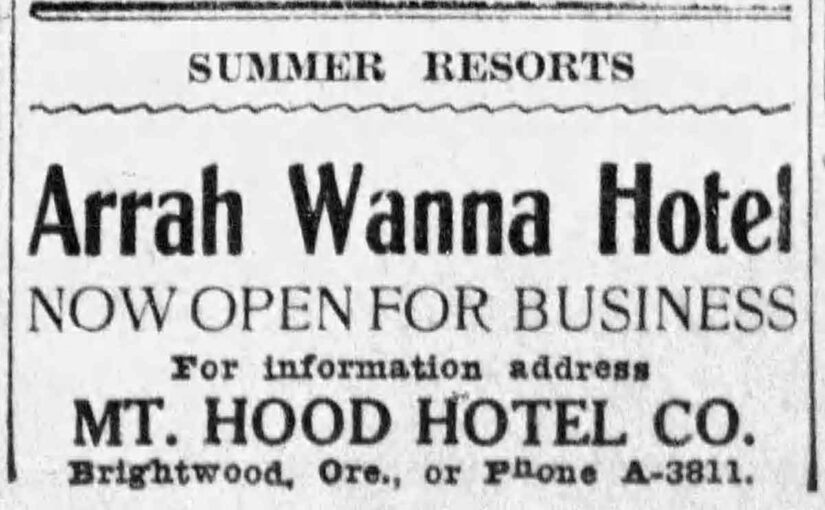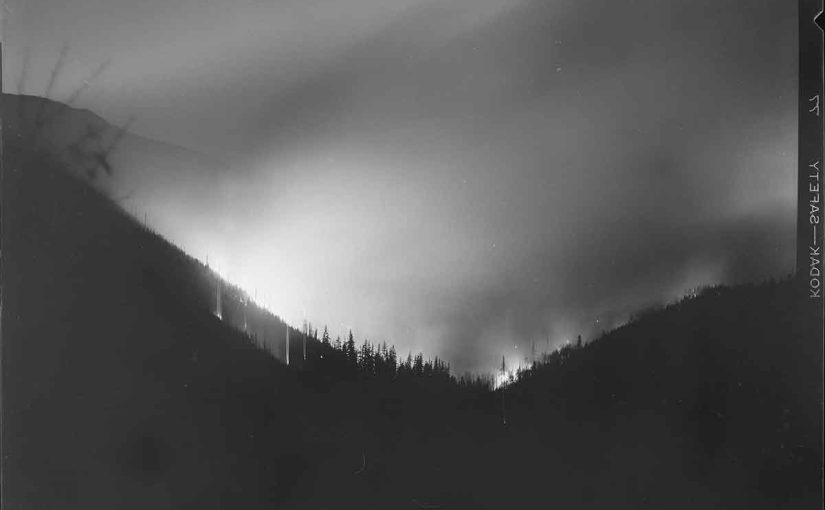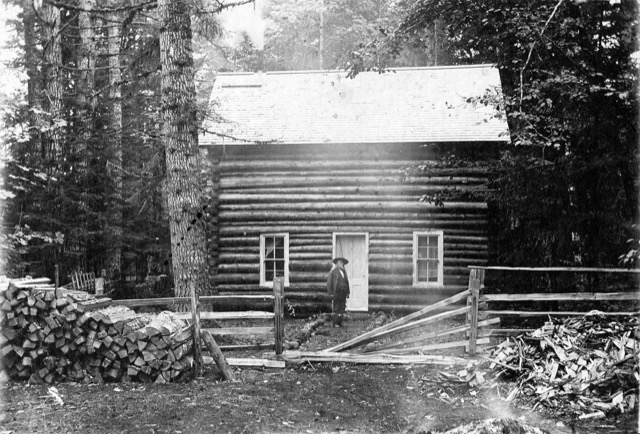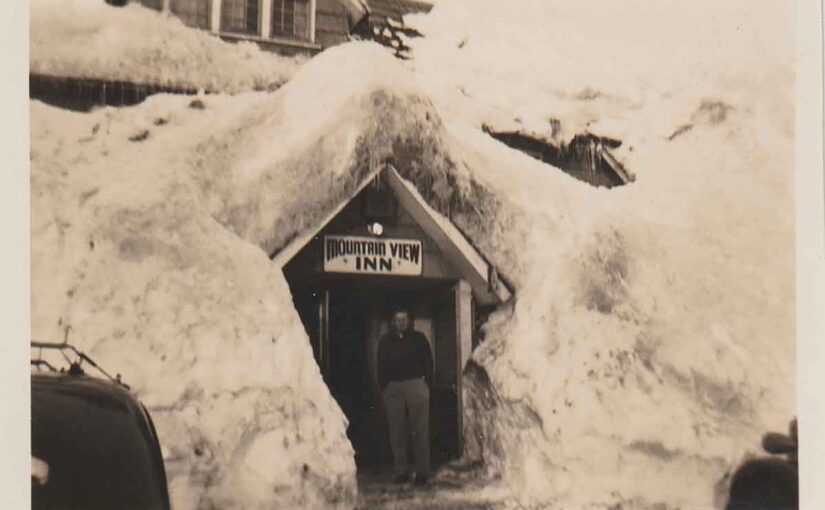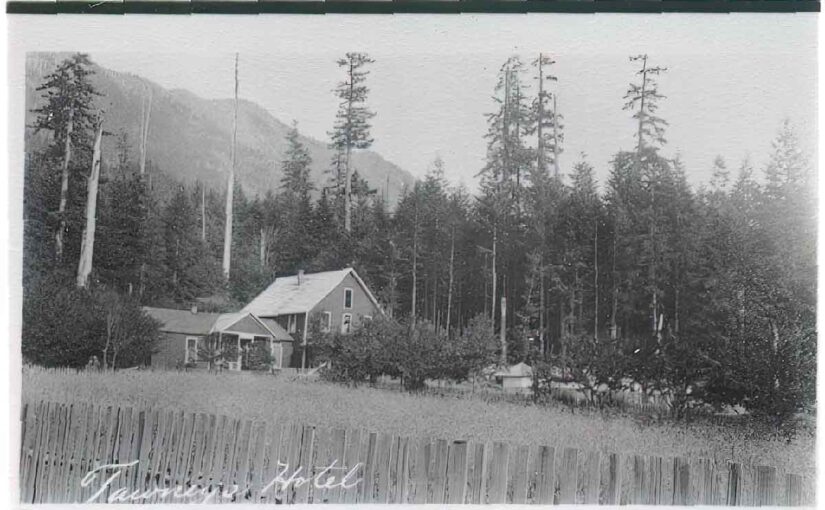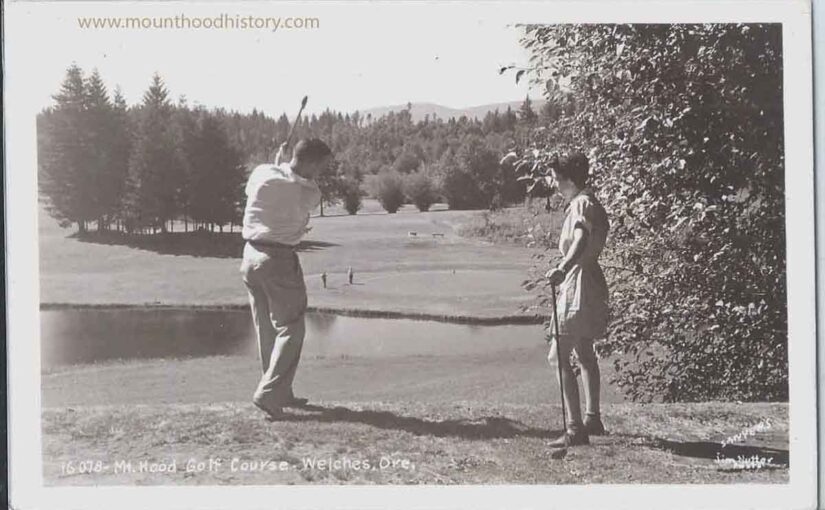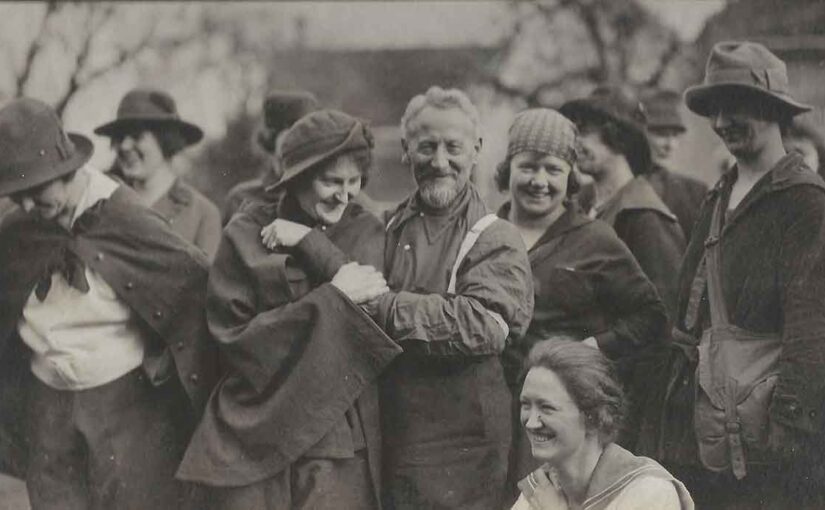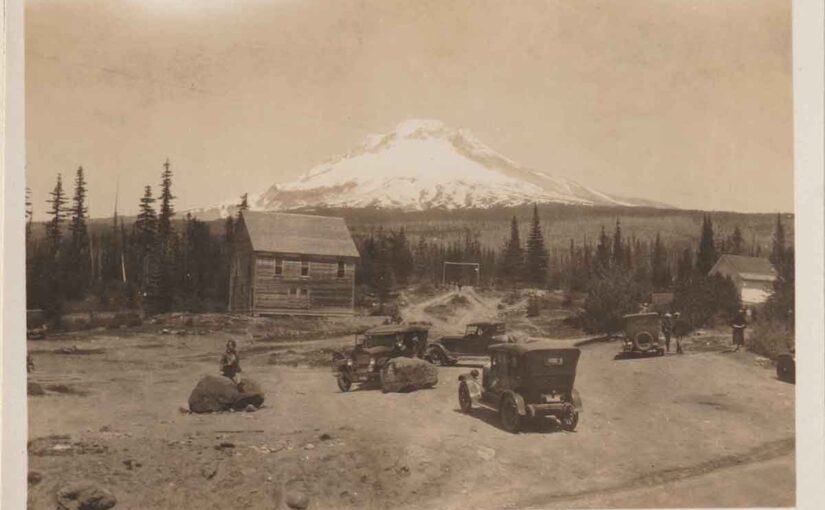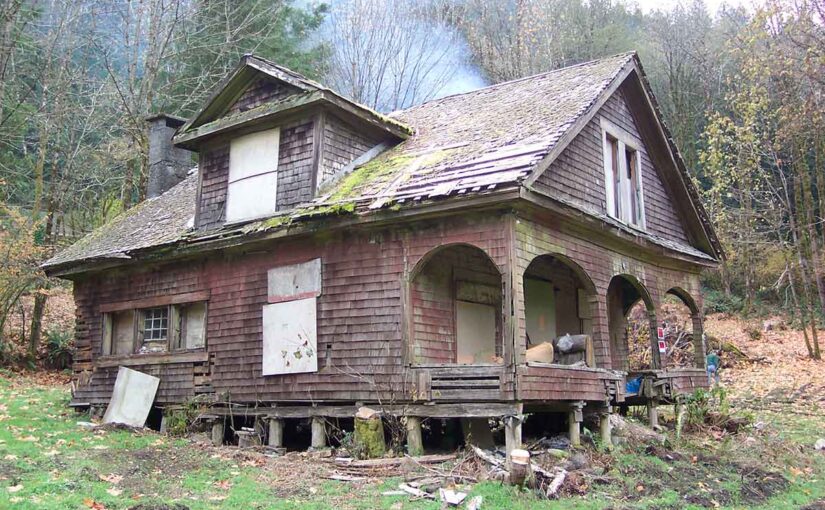A History of Arrah Wanna
The Birth of Arrah Wanna Hotel
Nestled in the picturesque surroundings of the Salmon River in Wemme, Oregon, the Arrah Wanna Lodge began its story in 1909 when George Routledge acquired 160 acres of timberland. At the time, the land sat about a mile from the nearest automobile road, making it an ideal mountain retreat.
That same year, the Mount Hood Hotel Company, led by C. W. Kern, J. R. Routledge, and R. Woods, announced plans to construct a Swiss Chalet-style hotel. Kern had previously operated the Welches Hotel for five years. By 1910, construction had begun on an 80 x 90-foot, two-story building with 40 rooms and wide verandas. The hotel featured rough timber finishes, large stone fireplaces, and running water. The estimated construction cost reached $20,000, and the hotel planned to open for the 1910 season.
Early Years and Challenges
Although the hotel was completed, financial struggles soon arose. Nevertheless, its location and design attracted conventions and gatherings, including a YMCA conference in 1916. Despite these successes, ownership changed in 1918 when J. L. Bowman of the Brownsville Woolen Mill Store in Portland purchased the property. Bowman then leased the hotel to Mr. and Mrs. George L. Spencer, who enhanced its reputation as a high-class resort. They introduced specialty meals, such as chicken dinners and the famous “Spencer Hot Gingerbread.” A giant fir tree near the hotel became a major attraction, measuring 41 feet in circumference and 300 feet tall.
A Tragic Fire and Rebirth
On June 5, 1922, tragedy struck when the Arrah Wanna Hotel burned to the ground. Strong winds fanned the flames, reducing the wooden structure to ruins in just 30 minutes. Fortunately, the surrounding cottages and J. L. Bowman’s summer home survived the disaster.
Determined to rebuild, Bowman oversaw the construction of a new hotel by May 1924. The new lodge featured 17 guest rooms and 10 bungalows. Built primarily of native fir with hard maple floors, the hotel also included modern conveniences. An electric plant at the Salmon River provided power, while hot and cold running water improved guest comfort. Traditional activities such as hiking, trout fishing, and berry picking remained popular. Additionally, a boardwalk along the river and new bungalows enhanced the visitor experience.
Growth and Changing Management
John L. Bowman passed away in July 1928. As the president of the Brownsville Woolen Mills, he had played a significant role in the history of the Arrah Wanna Hotel for a decade.
Throughout the 1920s and 1930s, the Arrah Wanna Hotel underwent various management changes and improvements. Advertisements promoted dining options, including their specialty $1.50 chicken dinners with mashed potatoes and gravy. Entertainment such as music, dancing, and campfire gatherings enriched the guest experience. By 1936, the lodge began serving beer under a new license. Despite these efforts, financial difficulties persisted, leading to periodic closures and the hotel being listed for sale or lease.
Oregon Baptist Church Buys Arrah Wanna
In 1941, the lodge entered a new chapter when a Baptist church group purchased the property for $12,750. Their vision was to create a summer camp, leading to the birth of Camp Arrah Wanna. That summer, the camp hosted its first youth retreat. A five-year improvement plan soon followed, adding a Bible house, tabernacle, dining hall, and swimming pool. Over time, the camp became a cornerstone for religious retreats and youth activities in the area.
Into Modern Times
By 1952, a new swimming pool was constructed, and in 1962, $50,000 was allocated for further improvements. Beginning in 1969, Camp Arrah Wanna became one of the locations hosting Portland Public Schools’ Outdoor School program. During this six-day outdoor experience, sixth-grade students learned about science and nature while immersing themselves in the wilderness.
Today, Camp Arrah Wanna remains under the ownership of the American Baptist Churches of the Central Pacific Coast. It serves as a retreat and recreational facility, also hosting conferences and events for various groups.
Legacy of the Arrah Wanna Hotel
From its early days as a luxurious mountain hotel to its transformation into a church camp and community center, the Arrah Wanna Hotel has played a vital role in Oregon’s history. Its scenic location, engaging activities, and mountain lodge charm continue to captivate visitors. As a beloved landmark in the Mount Hood area, its legacy endures, reflecting the rich heritage of the region.

